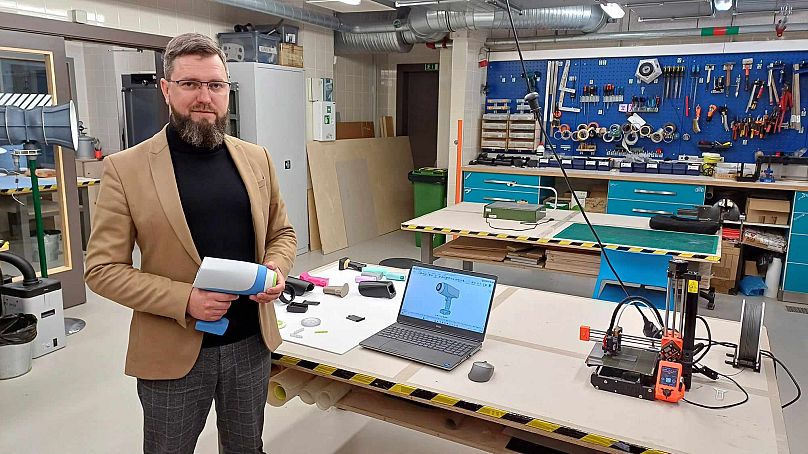Melanoma is the most dangerous type of skin cancer and while survival rates have improved in recent years, late diagnosis and delays in treatment remain key challenges.
Cancer cases are rising in Europe. According to EU data, approximately four per cent of all new cancer diagnoses in 2020 were melanoma, the sixth most frequently occurring form of cancer.
Barriers to early detection - patients presenting late, delays in patient consultations and limited access to dermatology appointments - are a concern, especially in countries where public healthcare pathways rely on general practitioners triaging patients before referral.
Medical experts argue that early diagnosis is essential for better skin cancer management.
With the help of EU funds, Bdetect, a medical equipment startup, has launched a portable early detection device, based on technology developed by researchers at the University of Latvia.
The technology uses different coloured lights to determine whether a skin lesion is malignant or benign and aims to simplify skin cancer detection. The wireless, handheld device allows GPs to carry out quick routine screenings in their practices with the click of a button.
Emīlija Vija Ploriņa, a researcher and PhD Student based at the University of Latvia's Institute of Atomic Physics and Spectroscopy, told Euronews that the survival rate for the final stage of melanoma is less than five per cent while in the first stage, it is almost 100 per cent.
What is skin melanoma?
Melanomas occur when the skin cells responsible for producing the pigments that give the skin colour, spread to other parts of the skin. While the exact cause of melanoma is unclear, most melanomas form after overexposure to ultraviolet (UV) rays.
The sun or artificial sources of sunlight like tanning devices emit UV rays, however, melanomas can also appear on parts of the body that are not usually exposed to the sun.
Fair-skinned people are more likely to burn from overexposure to UV rays and are therefore, at greater risk of developing melanomas compared to people with darker skin tones. Denmark, the Netherlands and Sweden have the highest cases of melanoma in the EU.
How does the technology detect melanoma?
The technology has been designed to reduce waiting times and costs, produce quicker results and improve patient outcomes compared to traditional screening methods.
Dr Ilze Ļihačova, a senior researcher at the Institute of Atomic Physics and Spectroscopy at the University of Latvia, explained to Euronews how the technology works: "Red, yellow or blue lights reflect differently because there is blood and melanin in the skin, different chromophores, that give us different information," she said.
The device uses LED light to penetrate the skin up to five millimetres deep. It then takes a picture and sends the image to a secure cloud system for analysis using an AI algorithm, the results are then generated in seconds.
“We get these increased values, which are red and yellow, which show us that melanoma is growing in this lesion,” demonstrated Vija Ploriņa while analysing an image of a malignant mole on the cloud system.
For research volunteer Valts, who has been advised to have annual dermatologist checks, this advance is a huge time saver, “In case I’m worried about some particular mole myself, then I can quickly find out if I shouldn’t worry about it or if I should go and seek a consultation with (the) dermatologist.”
At Riga Technical University researchers developed the hardware and processing techniques. The device has now been tested on over 4,000 lesions, to a high level of accuracy.
This project’s total budget was just over €645,000. Eighty-five per cent was provided by the European Regional Development Fund. The Latvian government gave 7.5 per cent of the budget while the remainder was covered by the University of Latvia and Riga Technical University.
According to Dr Dmitrijs Bļizņuks, Lead Scientist and Associate Professor at Riga's Institute of Applied Computer Systems, the technology is comparable to traditional screening methods: "For the risky patient, dermatologists pick the part of your skin, basically they cut it out and study it under the microscope, and they get the final result.
"We compared the results using the traditional method to our own and discovered that 95 per cent of all melanomas could be detected with our device".
Looking forward, it’s hoped the technology will be used to detect other cancers and rare diseases, helping to save more lives.













